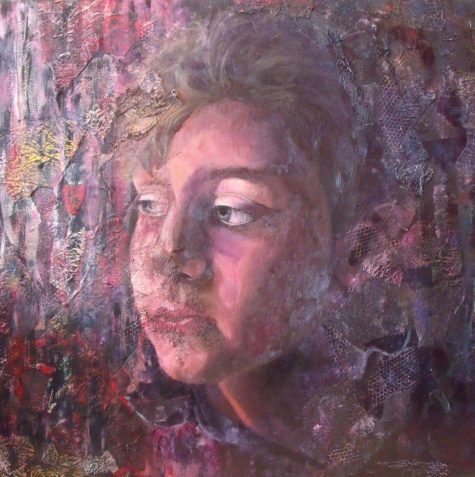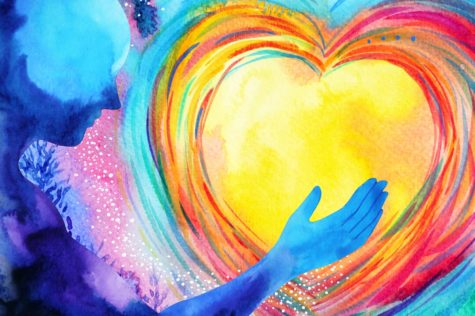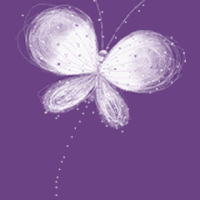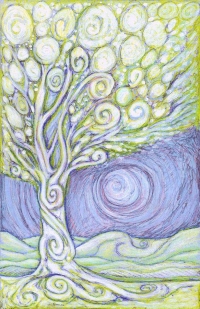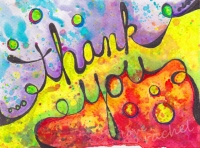Spiritual Healing
Blanket Forgiveness
Blanket forgiveness is an awesome instant healing technique that uses both touch and words. It is awesome because it works so quickly and it is awesome because you don’t even have to know whom you are forgiving for it to work.
It is based on an assumption that any physical condition involving swelling or infection also contains an emotional component of repressed anger or guilt. Notice that I didn’t say it was caused by emotions, just that it can be useful to assume that emotions are involved in causing at least some of the stress that is maintaining or aggravating the condition. If you can relieve the emotional tension, it will help the body heal more quickly.
The actual technique is very simple:
With your hand or fingers, you lightly touch the area that needs healing while at the same time you repeat the words, “whatever this is related to, I forgive it completely,” for as long as you can or until you get some relief. It’s likely that you’ll feel various physical sensations as you do this, such as tingling or movement or relaxation, and maybe even pain relief.
The more that anger or guilt is connected with the condition, the more quickly and dramatically you will experience healing effects. Even if angry emotions are only a small part of the malady, there will be some degree of benefit.
As I said, you don’t have to know consciously who or what the emotions are directed at. Just holding the idea of forgiveness while touching the infected or swollen area is enough to cause subconscious changes that will ease a lot of stress. The touch itself provides a certain amount of energy as well as helping to keep your mind focused on forgiving.
Note: It’s also very helpful to not just say the words but to experience them as well. What does forgiveness feel like? How does it sound? Is there a flavor? A color? A scent?
Of course, if you do know who or what you are resenting or feeling guilty about, that’s even better. Especially if you can make a breakthrough and are able to totally forgive and release it.
From: Instant Healing by Serge Kahili King
The Spiritual Stress Factor
This is part of a series of articles about The Stress Factor, from Instant Healing by Serge Kahili King.
The main symptoms of what I call spiritual stress are apathy and the severe form of boredom called ennui, although headaches and other physical and behavioral symptoms can also be connected with spiritual stress.
Apathy comes from a habit of increasingly distancing oneself from surrounding values, emotions, and activities to the point where a person is less and less stirred or motivated by the things that affect and interest other people. Apathy could be called the spiritual version of anger, because it seems to be a coping response to a sense of being helpless or frustrated.
Instead of feeling angry or depressed about being helpless or frustrated, some people simply suppress feeling. Unfortunately, the only way to do this is to keep the muscles in a state of tension so that feelings can’t be felt. And more unfortunately, if enough additional stress of any kind is added to the mix, the effort to hold back feelings may break down and allow an outburst of violence. It is quite common for people who suddenly break out in a frenzy of violence.
It is quite common for people who suddenly break out in a frenzy of aggressive activity to be described by people who know them as “quiet and unobtrusive.” I remember meeting a man who was very placid until someone did something he didn’t like. Then he became quietly menacing. I’m glad that no one did anything to really upset him while I was around.
Ennui is the spiritual counterpart of denial. The state of ennui however, is characterized by a denial of importance rather than existence. This is related to a sense of being unwanted or unloved. By this method of coping, a person tries to pretend that it doesn’t matter. It’s a variation on running away and therefore a version of fear. When this form of turning away from others and from the world becomes acute or chronic, it can also produce physical tension.
A curious form of spiritual stress comes from excessive fantasizing or meditation. The effect is something like the result of eating too much good food. These activities may be termed excessive when they result in physical tension. While the effect varies greatly among different individuals, the process is the same.
When consciousness is “away” from the body for too long, there is an increase in physical tension, which may include symptoms such as headaches and anxiety or worse. This effect is aggravated when fantasizing or meditation is used as an escape from ordinary reality.
It’s possible that even “healthy” fantasizers and meditators may feel a more or less subtle sense of relaxation or relief when they come back to body awareness. To some, the physical response of returning to body awareness is so strong that it seems as if their spirit is “slamming” back into the body because there is often a significant shaking or jerking of the muscles. A close study of this phenomenon has convinced me that the actual effect is one of a sudden release of tension.
A Co-Creative Healing Session
From my personal blog, Hey It’s Me, we have this post about Healing With The Brotherhood Of Light which I thought might be appropriate for Alternative Therapies, since it is an alternative therapy that is easy to do, and surprisingly effective ~ if you can suspend your disbelief and simply give it a try.

So this is what I did today! I had a session with the are you ready for it? The Co-Creative White Brotherhood Medical Assistance Program !! I know how crazy that must sound! But it was amazing and wonderful, and, well… I’ve set up a series of appointments for every Tuesday morning.
So what the heck is it? Some kind of weird cultish white supremacist wacko thing? Not at all.
I found out about it when I read a book called, “Behaving As If The God In All Life Mattered” which I bought because I loved the title. That book talked about the MAP (Medical Assistance Program) and so I bought that book as well. Now, this was somewhere in the neighborhood of 10 years ago…. and I got a lot of benefit from it for a while. Then, my interests and energy shifted, and I put it aside.
And then stuff happened, a lot of stuff, and I started to have the thought that I should pull it out of my “bag of tricks” and start doing it again.
Again the question, so what the heck is it?
Well, it’s a little hard to explain, but I’ll give it a go. It’s an organized method of contacting the healing energy of spirit, your guides, the Devas of healing, and that universal source of love and light that we often benefit from without even realizing it. Once contacted, you set up a “meeting” and a healing session.
The meeting and the healing session is a sort of meditation that you simply allow to happen, and participate in as the receiver of the energy, the balancing, and the clearing, or whatever else is required based on the issue you are requesting assistance with.
You can read a little bit more about it here: What Is Medical Assistance Program?

How do you do it?
If you are interested in trying it out, I would recommend that you buy the book. There is a lot of information connected with this simple process, and having the book will be extremely helpful if you have questions, or are unsure about it.
Here are links to both books on Amazon:
- Behaving As If The God In All Life Mattered
- MAP: The Co-Creative White Brotherhood Medical Assistance Program
The first thing you need to have is a way to be sure about your communication with your “team.” Intuitive knowing works well for some, but I needed a way to be absolutely sure that I wasn’t making it all up in my head.
So here’s what I did. I sat down and got quiet. Then, I asked my guides and angels to give me a clear signal of what a “Yes” answer would feel like in my body. For me, that came as a clenching of my solar plexus. I can’t remember what the “No” answer feeling was, and I should probably get that cleared up before my next session.
Anyway, that “Yes” answer signal has been extremely helpful to me over the years. I even used it once when I was trying to decide if buying an electric toothbrush was a good idea or not. And I will say, that I really really love my electric toothbrush! So. That’s what works for me.
You will need to figure out what works for you. It could be anything from a muscle twitch in your hand to a spontaneous smile. Do the meditation, and go with whatever feels right.
Next you will need a time and place where you can lay on your back, in a comfortable place, with absolutely no interruptions for an hour. Pillows, blankets, the floor, the bed… doesn’t matter where, just that you are warm and comfortable and have no worries about being interrupted or disrupted while having your session. Set an alarm so that you won’t be wondering what time it is, or possibly falling asleep and being “gone” for hours.
The First Session:
Before you begin your first session, make sure you are comfortable. Lay on your back, pillows under the knees, or wherever they need to be so that you feel very relaxed and comfortable. If it is too uncomfortable to lay on your back, you can also be in a relaxed sitting position. Either way, do not cross your legs, arms, or hands.
- Note: A “Coning” is what the author calls the healing session. The word coning doesn’t resonate well with me, so I usually say “session” instead, and it seems to work just fine.
To begin the session, state out loud, or to yourself: I would like to open a MAP coning. I would like to be connected with the following:
- Overlighting Deva of Healing ~ wait 10 seconds or use your “Yes” answer to confirm.
- Pan ~ wait 10 seconds or use your “Yes” answer to confirm.
- White Brotherhood Medical Unit ~ wait 10 seconds or use your “Yes” answer to confirm.
- Your higher self ~ wait 10 seconds or use your “Yes” answer to confirm.
I have a tendency to forget to call in my higher self when setting up a session, and always find myself calling in my highest guides, and all those in Spirit who love me. And I think it’s probably okay for you to call in anyone else you would want to have with you at the session.
Give yourself another ten to fifteen seconds to adjust to the energy.
The “coning” is now open and you are ready to begin. It’s that simple. It is not important if you did not have any sensations as the coning was activated. Your sensations or lack of sensations will not affect the quality of the coning in any way. What is important is that you be the one to call it into activation.
The first session is for scanning purposes only. This is the one session when you need not talk to your team if you don’t wish. The purpose of this session is to key you into their level, identify your various energy patterns, and get an appropriate medical team identified and working with you. This team will work with you during all your medical sessions.
Sometimes there will be visiting experts, and sometimes the team will shift and change. You do not have to do anything special for this to occur. Your primary team will be those who work with you during the majority of your sessions.
The initial scanning session will last an hour. You may feel gentle shifts and energy flowing throughout your body during this session. Or you may even feel like you are floating or moving. You also may feel absolutely nothing. Don’t worry about this. The work is going on.
When your timer goes off, the session is over. This is when you follow the protocol for ending the session.
- If this is your first session, request that you be given your code – a symbol, word, or sensation that you can use to identify your team. Whatever pops into your mind next will be it.
- Don’t discount what happens once you request the code. My code word is “code” which I found so doubtful that I tried to turn it into codex. So for me, it’s “code ~ codex” because I am not quite sure which is right. So, don’t do what I did. Just accept that first word, symbol, or sensation.
The protocol for ending the session is quite simple. Focus on each member separately, thanking that member and asking to be disconnected. To be sure that the disconnection has taken place, you can ask “Am I disconnected?” and then wait for your “Yes” or “No” answer. If the answer is a “No” simply state again that the session is now over, thank you so much, and please disconnect me.
Wait twenty-four hours before opening the next session if this was your first one. The body needs that time to adjust to the impact of the coning and the expansion of working with the “White Brotherhood Team.” Once you have waited the initial twenty-four hours, you do not need to wait that long again. You will be able to initiate a session anytime you feel a need.
I have a planned schedule of once a week on Tuesday mornings. This schedule can be changed if need be. I like a planned schedule because it helps me to remember to do it. If planned schedules don’t work for you, that’s fine too.

Regular Sessions:
Lie down on your back (or sit). Get comfortable. Cover yourself with a blanket if you wish. Set your alarm for 40 minutes.
To begin the session, state out loud, or to yourself: I would like to open a MAP coning. I would like to be connected with the following:
- Overlighting Deva of Healing ~ wait 10 seconds or use your “Yes” answer to confirm.
- Pan ~ wait 10 seconds or use your “Yes” answer to confirm.
- White Brotherhood Medical Unit ~ visualize your team’s symbol or say the code word ~ wait 10 seconds or use your “Yes” answer to confirm.
- Your higher self ~ wait 10 seconds or use your “Yes” answer to confirm.
Wait ten to fifteen seconds after activating the full coning so that your body can stabilize itself within the coning and with the team.
Now, focus your attention on the session and your team. If you can’t feel or sense your team, just keep your focus on the session. Describe as fully as you can how you are feeling. This includes how you feel physically, emotionally, mentally, and spiritually. Relax about what you are about to articulate. You get better with practice.
- Note: It is helpful to speak to your team out loud because this makes it easier to maintain your focus on what you are feeling, however it is not necessary. You can talk to your team silently and it will be just as effective. Do whatever works best for you.
This is kind of like when you make a visit to the Dr’s office, and you talk about what it is that brought you there. When describing symptoms to your team, be as precise and as accurate as possible. Try not to go for generalities, and avoid giving a name to your symptoms. For example, instead of saying “I have asthma.” Say, “It’s hard for me to breathe when…” And then describe the physical feelings and the situations that trigger them.
Allow forty minutes for the session to be completed. If you feel uncomfortable during the session, tell your team what you are feeling, and then relax and trust that at the end, whatever adjustments and shifts that were making you uncomfortable will have been completed.
It is best to move as little as possible during a session, but if you feel a strong need to move or change position, tell your team and ask if it will be okay. Any time you have questions, ask them. Follow your intuition and if you are unsure about something, speak up.
At the end of forty minutes, thank your team, and close the session by saying out loud, or silently: I’d like to close the coning. I’d like to disconnect from:
- My Higher Self
- My White Brotherhood Medical Team
- Pan
- The Overlighting Deva of Healing
Thank and disconnect from anyone else you may have invited to stand in. Wait for a few moments, and then verify that you have been disconnected.
Yay! Now it’s done. So, how do you feel? What happened? Anything interesting? You might want to write about it, or make a few notes. And, as always after an energy session, drink a glass of water and if possible go outside to get grounded and clear.
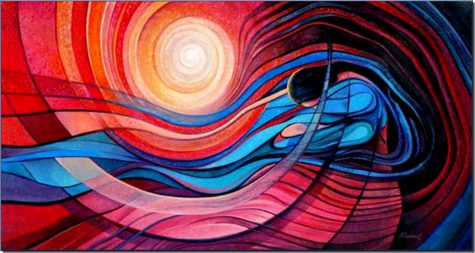
What Was My Experience?
My experience today was really interesting. I hadn’t done this in such a long time and I didn’t really remember all the exact protocols, so I just did it as an initial scan. I did, however, mention to them that I felt as if I had an energy sucking demon sitting on my chest that I didn’t quite know how to get rid of.
The energy was great. At one point I felt as if my mind expanded past the confines of my brain and that was really nice. Grandfather, one of my Native American, guides showed up, haven’t seen him in a long time, so that was fun.
Unfortunately, I was using my phone as my timer, and a flash flood alert jarred me out of it for a few moments right towards the end of the session. But I was able to slide right back in. And we did an interesting thing of taking my energy sucking demon and giving him a home in a cool chunk of rock that I brought home from my camping trip.
I promised him that if he would hang out in the rock, that I would give him all my angst and agony to feed on if he would agree that they were now HIS and no longer MINE. I also gave him permission to pull any of my “bad” energy off of me whenever I walk by. And so, instead of “getting rid” of him, we made friends, and he now has a nice spot next to a snakeskin, a skull, and a multi headed dragon incense burner. He seems happy there. I burned a cone of Myrrh for him as an offering of thanks. Fun, huh?
I feel quite a bit lighter, and cleaner. So.. it was all good!
Try This Hawaiian Healing Technique
“Two years ago, I heard about a therapist in Hawaii who cured a complete ward of criminally insane patients–without ever seeing any of them.
The psychologist would study an inmate’s chart and then look within himself to see how he created that person’s illness. As he improved himself, the patient improved.
“When I first heard this story, I thought it was an urban legend. How could anyone heal anyone else by healing himself? How could even the best self-improvement master cure the criminally insane? It didn’t make any sense. It wasn’t logical, so I dismissed the story.
“However, I heard it again a year later. I heard that the therapist had used a Hawaiian healing process called ho ‘oponopono. I had never heard of it, yet I couldn’t let it leave my mind. If the story was at all true, I had to know more.
I had always understood “total responsibility” to mean that I am responsible for what I think and do. Beyond that, it’s out of my hands. I think that most people think of total responsibility that way. We’re responsible for what we do, not what anyone else does–but that’s wrong.
“The Hawaiian therapist who healed those mentally ill people would teach me an advanced new perspective about total responsibility. His name is Dr. Ihaleakala Hew Len. We probably spent an hour talking on our first phone call. I asked him to tell me the complete story of his work as a therapist.
He explained that he worked at Hawaii State Hospital for four years. That ward where they kept the criminally insane was dangerous. Psychologists quit on a monthly basis. The staff called in sick a lot or simply quit. People would walk through that ward with their backs against the wall, afraid of being attacked by patients. It was not a pleasant place to live, work, or visit.
“Dr. Len told me that he never saw patients. He agreed to have an office and to review their files. While he looked at those files, he would work on himself. As he worked on himself, patients began to heal.
“‘After a few months, patients that had to be shackled were being allowed to walk freely,’ he told me. ‘Others who had to be heavily medicated were getting off their medications. And those who had no chance of ever being released were being freed.’ I was in awe.
‘Not only that,’ he went on, ‘but the staff began to enjoy coming to work. Absenteeism and turnover disappeared. We ended up with more staff than we needed because patients were being released, and all the staff was showing up to work. Today, that ward is closed.’
“This is where I had to ask the million dollar question: ‘What were you doing within yourself that caused those people to change?’
“‘I was simply healing the part of me that created them,’ he said. I didn’t understand. Dr. Len explained that total responsibility for your life means that everything in your life- simply because it is in your life–is your responsibility. In a literal sense the entire world is your creation.
“Whew. This is tough to swallow. Being responsible for what I say or do is one thing. Being responsible for what everyone in my life says or does is quite another. Yet, the truth is this: if you take complete responsibility for your life, then everything you see, hear, taste, touch, or in any way experience is your responsibility because it is in your life.
“This means that terrorist activity, the president, the economy or anything you experience and don’t like–is up for you to heal. They don’t exist, in a manner of speaking, except as projections from inside you. The problem isn’t with them, it’s with you, and to change them, you have to change you.
“I know this is tough to grasp, let alone accept or actually live. Blame is far easier than total responsibility, but as I spoke with Dr. Len, I began to realize that healing for him and in ho ‘oponopono means loving yourself.
“If you want to improve your life, you have to heal your life. If you want to cure anyone, even a mentally ill criminal you do it by healing you.
I asked Dr. Len how he went about healing himself. What was he doing, exactly, when he looked at those patients’ files?
“‘I just kept saying, ‘I’m sorry’ and ‘I love you’ over and over again,’ he explained.
“That’s it?”
“That’s it.”
“Turns out that loving yourself is the greatest way to improve yourself, and as you improve yourself, you improve your world.
“Let me give you a quick example of how this works: one day, someone sent me an email that upset me. In the past I would have handled it by working on my emotional hot buttons or by trying to reason with the person who sent the nasty message.
“This time, I decided to try Dr. Len’s method. I kept silently saying, I’m sorry’ and ‘I love you,’ I didn’t say it to anyone in particular. I was simply evoking the spirit of love to heal within me what was creating the outer circumstance.
“Within an hour I got an e-mail from the same person. He apologized for his previous message. Keep in mind that I didn’t take any outward action to get that apology. I didn’t even write him back. Yet, by saying ‘I love you,’ I somehow healed within me what was creating him.
“I later attended a ho ‘oponopono workshop run by Dr. Len. He’s now 70 years old, considered a grandfatherly shaman, and is somewhat reclusive. He praised my book, The Attractor Factor. He told me that as I improve myself, my book’s vibration will raise, and everyone will feel it when they read it. In short, as I improve, my readers will improve.
“‘What about the books that are already sold and out there?’ I asked.
“‘They aren’t out there,’ he explained, once again blowing my mind with his mystic wisdom. ‘They are still in you.’ In short, there is no out there. It would take a whole book to explain this advanced technique with the depth it deserves.
“Suffice It to say that whenever you want to improve anything in your life, there’s only one place to look: inside you. When you look, do it with love.”
It’s the attraction factor – like attracts like – his God-self was so strong that it attracted the God-self in others.”
Article by: Joe Vitale
Releasing Emotional Turbulence
It’s not easy to deal with painful emotions head-on. But it’s a key to good health and well-being physically, mentally, and spiritually. If we don’t deal with pain when it occurs, it will resurface as compounded emotional toxicity later on — showing up as insomnia, hostility and anger, or fear and anxiety.
As a further complication, if you don’t know how to deal with feelings of anger and fear, you’re likely to turn them inward at yourself, believing, “It’s all my fault.” That guilt depletes our physical, emotional, and spiritual energy until any initiative or movement feels impossible. We feel exhausted and paralyzed, leading to depression.
You can learn how to recognize painful emotions right away and how to effectively “metabolize” and eliminate pain.
Overcoming difficult emotions such as fear, anger, guilt, and anxiety can bring the same disguised benefits that dealing with a physical illness can bring. Patients suffering from life-threatening illness often report that their diseases have taught them to love and value the other people in their lives more deeply than before they became ill. During recovery they learn to appreciate and understand areas of life that they took for granted before. While anger, fear, and worry are not diseases, we can grow from them even as we process them to become the person we want to be.
By turning to our inherent intelligence, harmony, and creativity, we can create a positive outcome; but if we are emotionally turbulent, we are too agitated to access that possibility.
Why meditation is part of this exercise:
Through meditation we can experience our silent self beyond our thoughts and emotions. This is our internal reference point for equilibrium. From here we can create a desired outcome. To restore balance in our life, meditation must be an essential ingredient.
It is also important to support this with balanced activity in the basic areas of diet, exercise, and sleep. While some of these meditation exercises do not require any, we recommend our simple and effective meditation accessories for beginners.
Assuming these fundamental balancing components are in place, I would offer an additional exercise to specifically address what to do in the face of intense anxiety and fear.
Metabolize pain with this seven-step exercise:
Toxic, turbulent emotions have one cause — not knowing how to deal with pain. Pain is normal in life, but suffering isn’t. When we do not know how to deal with pain, we suffer.
- 1. Identify and locate the emotion physically
Set aside a few minutes when you won’t be disturbed. Pick any quiet place where you feel calm. It is recommended to take a seat that is sturdy, yet comfortable. The best practice is sitting up straight. The floor is not a bad idea, but this can become uncomfortable very quickly. Sit in a relaxed position and close your eyes. For a few minutes, just meditate in silence. Focus on your breathing — or if you prefer, you may use a mantra.
Now with eyes still closed, recall some circumstance in the recent past that was upsetting to you. It may be a time when you felt you were mistreated, an argument with your partner, or perhaps a past injustice at work. Identify some instance where you felt emotionally upset.
For the next 30 seconds, think in detail about that incident. Try to picture what actually happened as vividly as you can, as if you were reporting it for a newspaper. Here, you are the observer watching this event. You are not the event, argument, or emotional upset; you are merely witnessing what is happening from the perspective of your silent self. You are carrying the effect of the meditation you just did, allowing you to maintain a vantage point that is not overshadowed by the intensity of the emotions.
Now identify exactly what you are feeling. Put some word on the incident that describes what you are experiencing. Be as precise as you can. Do you feel unappreciated? Insulted? Treated unfairly? Give the feeling a name. Come up with a word that epitomizes the painful experience. Focus your attention on that word.
- 2. Witness the experience
Gradually allow your attention to move away from the word. Let your attention wander into your body. Become aware of the physical sensations that arise in your body as a result of the emotion you’ve identified.
These two elements — an idea in the mind and a physical sensation in the body — are what an emotion truly is, and they can’t really be separated. This is why we call it a feeling — because we feel emotions in our bodies.
Let your attention pass through your body as you’re recalling this experience. Locate the sensations the memory brings up. For many it’s a pressure in the chest or a sensation of tightness in the gut. Some feel it as pressure in their throat. Find where it is in your body that you’re feeling and holding the emotional experience.
- 3. Express the emotion
Now express that feeling. Place your hand on the part of your body where you sense that the feeling is located. Say it out loud: “It hurts here.” If you’re aware of more than one location for the pain, move your hand from place to place. At every location, pause for a moment and express what you’re feeling. Say, “It hurts here.”
When you experience physical discomfort, it means that something is unbalanced in your experience — physically, mentally, or spiritually. Your body knows it — every cell in your body knows it. Befriend these sensations and their wisdom, because the pain is actually leading you to wholeness.
Writing your feelings out on paper is also a valuable way to express the emotion. This is especially effective when you can write out your painful experience in the first person, in the second person, and finally from the perspective of a third-person account.
- 4. Take responsibility
Be aware that any painful feelings you experience are your feelings. These feelings are happening inside your body now as you remember the pain, even though nothing is actually taking place in the material world. You’re only remembering what happened, yet your body is reacting with muscle contractions, hormonal secretions, and other responses within you. Even when the painful incident was occurring in the material world, the effect was entirely within you. You have a choice in how you interpret and respond to emotional turbulence. Recognizing this is taking responsibility for your feelings.
This doesn’t mean you feel guilty. Instead, it means you recognize your ability to respond to painful situations in new and creative ways. By taking responsibility for your feelings, you can also gain the power to make the pain melt away. You’re no longer blaming anyone else for having caused the pain, so you no longer have to depend on anyone else to make it go away. Hold that understanding in your consciousness for the next few moments.
- 5. Release the emotion
Place your attention on the part of your body where you’re holding the pain, and with every exhalation of your breath, have an intention of releasing that tension. For the next 30 seconds, just feel the painful sensation leaving your body with every breath. Some people find that making an audible tone that resonates in that part of your body where the pain is localized helps to loosen and lift the contraction away.
You can also experiment to discover what works best for you. For some people, singing or dancing does the trick. You may try deep breathing, using essential oils, or taking a long warm bath. Finally, if you have written out your emotions on paper, it can be helpful to ritually burn the paper and offer the ashes to the winds.
- 6. Share the outcome
Sharing the outcome of releasing your pain is important because it activates the new pattern of behavior after the old painful pattern is released. Imagine that you could speak to the person who was involved in that original painful incident. What would you say to that person now?
Bear in mind that he/she was not the real cause of your pain. The real cause was your response. In your transformed state, you are now free. So you can share what happened without blame, manipulation, or seeking approval. Perhaps they intended to cause you pain, and you may have unwittingly collaborated in that intention. Maybe you would like to say you no longer intend to fall into such traps.
Whatever you say is totally up to you. As long as you have an awareness of the steps we’ve taken so far in this exercise, whatever you say will be right for you.
- 7. Celebrate the process
Now you can celebrate the painful experience that had taken place as the valuable material that helped you move to a higher level of consciousness. What was previously a disconnected, destructive, and disabled part of your psyche is now integrated and contributing its power toward your greater spiritual goal. Instead of responding to the situation with a pain reflex, perpetuating the problem, you’ve turned it into an opportunity for spiritual transformation. That is something to celebrate! Go out for a nice dinner or buy yourself some flowers or a present to honor the new you.
Use this exercise whenever you feel upset, to free yourself from emotional turbulence and the underlying pain. When you do that, you’ll find that opportunities will arise more often in every area of your life.
Found at: Gaiam.com
About Psychic Healing
Psychic or spiritual healing is a human potential we all possess. Some people are especially good at this. It is probably easier to heal someone else by occult means than yourself. In addition to healing in the presence of the person, there is ‘absent healing’ in which the healing occurs at a distance.
Note that there are some who maintain that influence on another person without his specific knowledge and permission (yes, even in healing and helping) is black magick. (After all, everybody is living according to his own true will, so that healing or helping someone without permission is affecting his will). This means it is important to tell the person what you are planning to do and to ask his permission.
The theory of psychic healing is that sickness is characterized (although not necessarily caused) by a deficiency and imbalance of vital energy. Psychic healing transfers energy from the healer to the sick to repair and rebalance his energies.
If an inept healer overdoes the process, or if he doesn’t take the precaution to ‘disconnect’ himself afterwards, he may find himself becoming sick due to energy drain and a linkage to his subject. Similarly, the healer should always be in a good state of health or he could unintentionally transfer his illness to the subject.
Psychic healing should always be combined with medical care and treatment. It does not replace doctors, medicine, or hospitals, since different levels (worlds) are involved.
The basic methods of psychic healing are:
- Visualization
- Prayer
- Ritual
Creative visualization is one of the easiest techniques. Mild illness may yield to only one or two treatments; serious ills will require many treatments over time. In creative visualization, we visualize the person being well. It may be helpful to utilize the appropriate color from the aura chart (such as bright apple-green, rose pink, or white) sent as a beam to the person or as a cloud surrounding him. This technique can be extended to include a simple kind of yoga in which we feel energy sent as we exhale explosively; the energy sent either via the breath or from one of the chakras such as the solar plexus.
Prayer is also a simple technique. This can range from invocations to a specific deity complete with offerings and candles to a recitation of the ‘Lord’s Prayer’, the 23rd, and/or the 91st Psalms.
Channeled healing energy – such as Reiki, and other systems – are essentially a combination of visualization and prayer, and can be learned. Reiki is one of the simplest methods to practice, and is worth exploring.
A banishing ritual is helpful in psychic protection and healing since it forms a protective barrier against malevolent forces. The psychic barrier it creates can be made to permit entry of desired (constructive) forces and the exclusion of negative ones. Thus, the banishing ritual is an essential first step in almost any formal full magick ceremony. Here’s a link to a Simple Banishing Ritual.
Note: Sometimes in absent healing it is helpful to arrange a time for treatment in advance, asking your subject to be in a receptive state of mind and to sit back and close his eyes.
Author: Phil Hansford
What is the Medical Assistance Program?
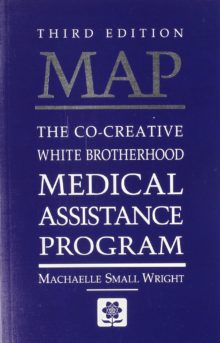 In my studies of things “spiritual”, I came across an interesting healing modality that involves working directly with Pan, the Devic Kingdom, and the Brotherhood of Light. This process works with these groups for healing of the self, or our Earth Mother. This technique is highly effective, fun to work with, and very rewarding!
In my studies of things “spiritual”, I came across an interesting healing modality that involves working directly with Pan, the Devic Kingdom, and the Brotherhood of Light. This process works with these groups for healing of the self, or our Earth Mother. This technique is highly effective, fun to work with, and very rewarding!
The Medical Assistance Program (MAP) Coning is a “wild and wooey” technique you can do at home that integrates involutionary input of nature with man’s evolutionary development. The healthy being is a balanced combination of these two dynamics. Intent, sincerity, and commitment to a balanced body during the process is essential for an effective coning. It is for those who feel their present medical support–whether traditional or alternative– is not enough.
Conings are for general health balance, regular health issues, extra ordinary health issues, and assistance during expansion experiences. A coning is a vortex of energy that includes nature intelligence’s, the medical team and yourself. Within the coning, nature is able to stabilize on all levels (physical, emotional, mental and spiritual) with the White Brotherhood.
The first coning is a scanning session only. Anyone who should be part of your Medical Team for positive purposes will automatically be included when the team is forming. Subsequent sessions are for the purpose of healing.
The head “CEO” of the Medical Assistance Program is a spirit called Lorpuris. Both Pan and Lorpuris are discussed in one of my favorite metaphysical gardening books, The Findhorn Garden by the Findhorn Community.
The MAP technique is found in the book MAP: The Co-Creative White Brotherhood Medical Assistance Program 2nd Ed. (c) 1994 by Machaelle Small Wright. For more information on this process you may order Machaelle’s book. Call 1 (800)960-8806 or contact her web site at: http://www.perelandra-ltd.com/ Cost of the book last time I checked was $14.95 plus shipping and handling.
A basic how-to, and a personal experience can be found here: A Co-Creative Healing Session

